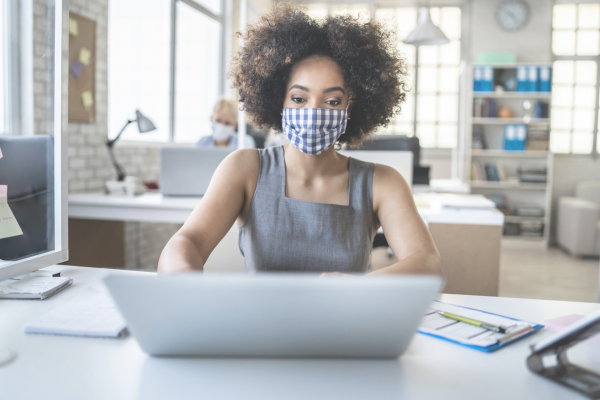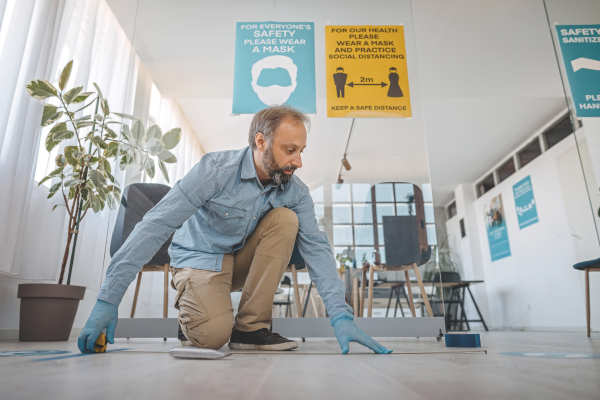 The COVID-19 pandemic has shifted the way people live their lives as the world continues to navigate a ‘new normal’. With the lifting of restrictions and the opening of both state and international borders, the risk of contracting COVID-19 in the workplace is a very real possibility.
The COVID-19 pandemic has shifted the way people live their lives as the world continues to navigate a ‘new normal’. With the lifting of restrictions and the opening of both state and international borders, the risk of contracting COVID-19 in the workplace is a very real possibility.
Across all industries, including those that have not mandated the vaccine or put in place relevant COVID-19 policies and safety measures, it’s more important now than ever to actively manage the risks associated with employees contracting COVID-19 at work.
Recent case study
The NSW Personal Injury Commission recently ordered an employer’s insurance provider to pay $834,000 to the widow of a worker who contracted COVID-19 on a business trip, and subsequently died.
The job required the employee to travel between Australia and the US and in July 2020, they travelled to New York for business. Within a week, they were taken to hospital via ambulance where they remained for four months before their death in November 2020, accumulating 11 million USD in hospital bills. Their death was ruled as resulting from acute respiratory disease because of complications from COVID-19.
The employer’s insurance provider stated that the employee was working for their US affiliate at the time of contracting the disease, and therefore compensation was not payable under the workers compensation system. This was rejected by the NSW Personal Injury Commission who stated that the employee was receiving their normal pay via the Australian payroll system during their trip.
The insurance provider also declared that the employee could have contracted the disease when socialising instead of while he was working, another claim which was rejected by NSW Personal Injury Commission. The Commission is still considering whether medical expenses are payable to the employee’s widow.
This case highlights the importance of implementing and enforcing COVID-19 policies and safety measures correctly; to not only protect employees, but to also protect the business.
 Protecting your workers and your business
Protecting your workers and your business
Business owners across Australia need to closely examine the safety control measures in place surrounding COVID-19, and look at making them robust in order to mitigate the risks. Employers have a duty of care to workers and this case highlights the importance of applying and following as many work health and safety measures as possible.
Current relevant work health and safety legislation across Australia states that both businesses, individual officers and directors may be at risk of being held liable for breaches of their positive obligation to exercise due diligence on work health and safety matters, which may include implementing and monitoring COVID-safe systems of work.
In demonstrating best practice, business owners should look to prioritise the management of potential safety risks by implementing the following types of measures
- Having a COVID-19 Safety Plan is mandatory for many types of businesses. Employers should ensure it complies with relevant state government directives and requirements. Employees should be made aware of the safety plan and it should be circulated and made available to workers and visitors to the workplace.
- Implementing a reasonable and appropriate COVID-19 Vaccination Policy in the workplace is important. A vaccination policy may include the requirement to remain fully vaccinated to protect the health of workers and reduce liability. COVID-19 vaccines are scientifically proven to lessen the transmission and severity of the disease, therefore employers who enforce vaccination requirements will be taking reasonable steps to ensure the health and safety of employees at work.
- Ensuring physical distancing is a simple yet effective control measure that employers can implement to help prevent the transmission of COVID-19. Changing office layouts to avoid overcrowding, changing start and finish times, increasing sanitation practices and encouraging working from home where feasible, are all effective strategies. The jump in vaccination rates does not suggest that these measures should be sidelined
- There is growing evidence about the importance and effectiveness of ventilation and purification in reducing the spread of COVID-19. Business owners may choose to look at undertaking a review and risk assessment of the ventilation in the workplace in order to increase airflow in high-traffic areas.
More than anything, employers should be ready to adapt and change to the evolving situation. An increase in vaccination rates shouldn’t allow for complacency, and businesses should ensure they have appropriate systems in place to take action if and when it becomes necessary.
If you need assistance implementing an effective COVID-19 Safety Plan in your workplace, get in touch with our highly skilled team of HR professionals.
Find our articles helpful? Remember to follow us on Facebook, Instagram or LinkedIn to keep up to date with our practical tips and information for business owners and managers.
